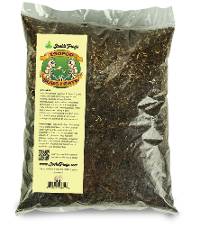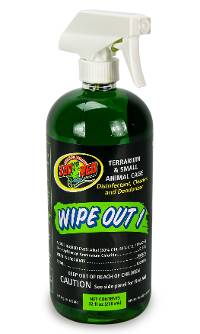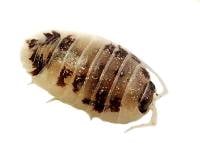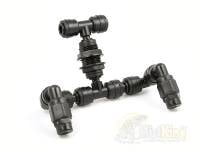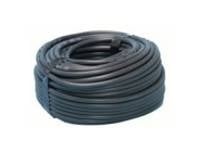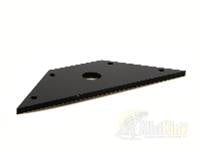Josh's Frogs
Painted Mantella - Mantella baroni (Captive Bred)
Painted Mantella - Mantella baroni (Captive Bred)
$69.99 5.0 out of 5 stars
(5)
5.0 out of 5 stars
(5)About This Product
Defining Characteristics:
- Captive Bred to Support Conservation. Josh's Frogs donated $5 to Association Mitsinjo for every mantella sold. This partnership helps directly conserve mantella populations in the wild.
- Great Beginner Frog
- Black with green markings on and around legs transitioning to an orange on the hind limbs
- Moderately easy to Keep
- Moderate Peeping Call
- Small
- Can be Kept in Groups
- Moderate to Breed
Name: Mantella baroni is commonly called the painted or Baron's mantella in the hobby. This mantella is very similar to madagascariensis but is often times larger and has a dot on its chin whereas madagascariensis has a horseshoe mark.
Recommended Vivarium Size: Housing painted mantellas can be very simple. A 10 gallon aquarium can house a couple individuals, while an Exo Terra Glass Terrarium with a footprint of 18x18 or larger could house 4-6 painted mantellas. Painted mantellas seem to be completely passive towards each other for the most part (outside the breeding season), and do great in groups.
A screen top with daily mistings will maintain the perfect balance of ventilation and humidity. Substrate recommendations vary considerably, but long fiber sphagnum moss works well for Josh’s Frogs. Alternatively, you can set up a vivarium using Josh’s Frogs naturalistic vivarium substrates, similar to keeping dart frogs.
Provide items for your painted mantellas to hide under, such as a cork bark flat or leaf litter. Your Mantella baroni will spend much of the time hiding under such objects. A shallow water bowl should be provided, as well. Painted mantellas are not particularly arboreal, but they will appreciate a small bit of vivarium wood or live terrarium plants to climb on.
Lighting is for any live plants provided, and not required by painted mantellas. There is no evidence that Mantella baroni benefit from UVB lighting, but a low level UV bulb, such as a 5.0 UVB bulb, may be beneficial, and is what Josh's Frogs uses on all mantella tanks. Based on observations of painted mantellas being active during the day in the wild in partial sunlight, a low level UVB source would probably be a good idea.
Temperature: They are ideally kept at about room temperature, in the low to mid 70s. Unlike many other mantellas, painted mantellas stress easily in hot temperatures over 80F. Avoid warmer temperatures at all cost.
Humidity: Painted mantellas can handle a wide range of humidity levels, but prefer a humidity level of 60-70%. Routine spraying and a full screen top will aid in providing proper humidity levels. Be sure to provide a shallow water dish so that your painted mantellas will not dry out in lower humidity.
During the breeding season, painted mantellas can experience humidity levels of 80% without issue.
Size: Adult Painted mantellas are not very large, and there is a small size different between males and females. An adult male may reach about 1.25 inch, but most will be closer to an inch. A large female will be a bit larger and much bulkier (or 'pear shaped') than a male, and may measure up to 1.33”. All of the Mantella baroni froglets Josh's Frogs sells are well started juveniles, and measure approximately .5” long.
Age: There is not any good data surrounding the average lifespan of painted mantellas, but wild caught animals have lived in captivity for over 5 years. We suspect this animal is easily capable for living into their teens.
All painted Mantellas for sale at Josh's Frogs are well started juveniles, and are 2-3 months old. Keep in mind, at this age froglets will have very different color and patterns than they will as adults.
Feeding: Most mantellas are microphagous, meaning that they consume small food items but the painted mantella can consume larger prey items than most as an adult. Mantella baroni do quite well on easily procured prey items in captivity. At Josh’s Frogs, we feed our adult painted mantellas primarily 1/8 or 1/4" crickets, as well as springtails, isopods, and extra small phoenix worms. Young painted mantellas start life feeding on baby springtails. All prey items should be dusted with a quality vitamin/mineral supplement.
At the size Josh’s Frogs sells captive bred Mantella baroni, they are eating melanogaster fruit flies and 1/8" crickets.
Sexing: Sexing adult painted mantellas can be fairly straightforward once they're older, but can be difficult on younger animals. Once the mantellas are about 10-12 months old, they display obvious sexual dimorphism. Females are about 1/5 times larger than males, and much more rotund. Males are smaller, more slender, and typically call when kept in a wet or more humid environment. A painted mantella's call is a distinct peeping sound similar to other mantellas.
Color/Pattern: Painted mantellas are a black frog with a green line around their nose as well as green patches around their limbs that transitions to orange on the hind limbs. The hind limbs are also striped with black markings.
Social Behavior: These frogs are generally well behaved in groups, but adult females can fight with each other during breeding season. Keeping a group in a large enough vivarium with plenty of visual barriers tends to negate this behavior. Overall, Mantella baroni is a great group frog.
Breeding: Breeding Painted Mantellas can be a bit challenging. In our experience, patience is key, as is a decent sized group that is male heavy. At Josh's Frogs, we managed to produce several healthy clutches with a groups of 7 or more.
Cycling is important. Reducing mistings by half to allow the mantella habitat to dry out a bit, ensuring clean water was always available to the animals in a shallow water dish during this time. Feeding should also be reduced by about half as well. This artificial dry season can be maintained for 3-4 months, followed by a 6 month return to daily misting and heavy feeding. Within a few days males should be heard calling if they are present.
Egg clutches can be larger than 50 eggs. Eggs should be removed and kept on damp sphagnum until they hatch and small, white/gray tadpoles can be seen squirming through the egg jelly. Water should be added to the container, flooding the egg clutch and allowing the tadpoles to swim free.
After a few days, the tadpoles should be removed with a turkey baster and placed in an aged 20 gallon aquarium with undergravel and sponge filters.At 74F, painted mantella tadpoles will eagerly consume a wide variety of foods, from brine shrimp flake to tetra algae wafers. After 6-8 weeks, they will develop limbs and begin to leave the water.
Newly morphed painted mantellas will quickly consume springtails and grow very fast.
Natural Range: This species is broadly distributed in east-central Madagascar from Fierenana south to Andringitra, at 600-1,400 m asl. History in the Hobby: Painted mantellas have been available as wild caught animals since at least the 1960s, but captive bred animals remain rare. Unfortunately, most imports were doomed in captivity due to primitive importation and shipping methods, as well as a lack of general knowledge surrounding their care.
Shipping
After placing an order containing a live animal, you will receive a scheduling email containing our JotForm scheduling link to schedule your new pet's delivery date.
With this scheduling link, you will be able to schedule your order's delivery up to 30 days in advance. You will be able to choose a date of delivery for Tuesday-Saturday (Saturday arrival depends on the carrier's service availability) with the estimated time of arrival generally being 12pm, or 4:30pm for more rural areas. Overnight lows must be above 40°F to ship directly to you (or above 30°F for FedEx Ship Center pickups) as well as below 90°F by estimated time of arrival.
If you require further assistance, or prefer to talk to one of our Customer Service agents, please feel free to reach out to our [email protected] email or our phone line 1-800-691-8178.
Other Customers Also Bought
Customer Reviews
5.0 out of 5 stars
Based on 5 reviews
Review data
5 star reviews
- 100%
4 star reviews
- 0%
3 star reviews
- 0%
2 star reviews
- 0%
1 star reviews
- 0%
Reviews
Bridget
5.0 out of 5 stars
Love them
Love joshs frogs
Marty
5.0 out of 5 stars
Great little frogs
M. Baroni are almost extinct in the wild. Its nice to have such a popular place as joshsfrogs selling them cb. not to mention the 5$ donated to conservation! The 3 I have all came in healthy and alert. Would buy again. THANKS AGAIN!!!!!
Baroni
5.0 out of 5 stars
Owner of Baroni Mantellas
Love Mantella Baroni! Colorful , easy to take care - had my frogs for over 3 years.
pixel
5.0 out of 5 stars
very pretty frog
nice frog
Sherry
5.0 out of 5 stars
Mantella
Just bought one more to go in my group hoping for male. Beautiful frog easy care. Nice to be able to buy CB and not wild caught.
Showing 1 to 5 of 5 results


